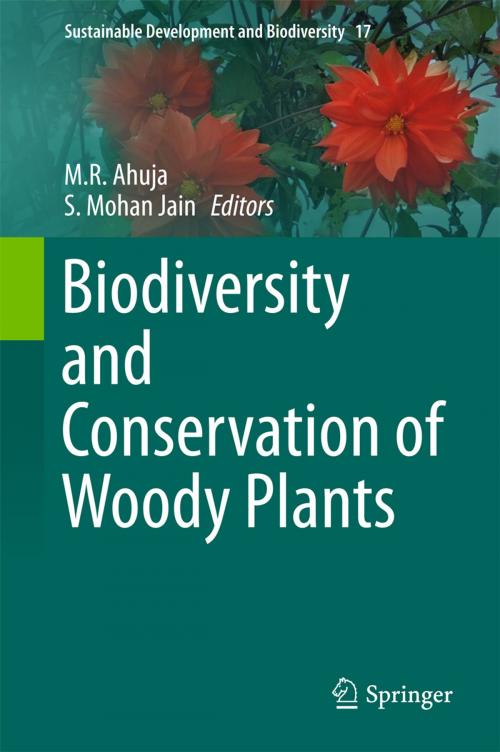Biodiversity and Conservation of Woody Plants
Nonfiction, Science & Nature, Science, Biological Sciences, Ecology, Technology, Agriculture & Animal Husbandry, Nature| Author: | ISBN: | 9783319664262 | |
| Publisher: | Springer International Publishing | Publication: | November 21, 2017 |
| Imprint: | Springer | Language: | English |
| Author: | |
| ISBN: | 9783319664262 |
| Publisher: | Springer International Publishing |
| Publication: | November 21, 2017 |
| Imprint: | Springer |
| Language: | English |
This book provides complete, comprehensive, and broad subject-based reviews for students, teachers, researchers, policymakers, conservationists, and NGOs interested in the biodiversity and conservation of woody plants.
Forests cover approximately 31 percent of the world’s total landmass; 93 percent is natural forest and only 7 percent consists of planted trees. Forest decline is progressing at an alarming rate worldwide. In addition to human activities (logging, deforestation, and exploiting forest lands for agriculture and industrial use), a number of other factors – including pests and diseases, drought, soil acidity, radiation, and ozone – are cumulatively contributing to global forest decline.
The present situation forces us to focus on forest conservation strategies for the present and future. Gene conservation and maintaining genetic diversity in forest ecosystems are crucial to the preservation of forest genetic resources. This calls for integrated action to implement both the in situ (on site) preservation of forest stands and ex situ (distant from the original site) strategies for the conservation of woody plants’ genetic resources. Selected priority areas include: 1) assessing patterns of genetic diversity and threats, 2) understanding the biological processes regulating genetic diversity, 3) assessing the impact of human activities and climate change on genetic diversity, and 5) finding methods for prioritizing species and populations for the conservation of forest trees genetic resources.
All chapters were written by leading scientists in their respective fields, which include: woody plant diversity, ecology and evolution; assessment of genetic diversity in forest tree populations; conservation planning under climate change; and in situ and ex situ strategies, including biotechnological approaches, for the conservation of woody plants genetic resources.
This book provides complete, comprehensive, and broad subject-based reviews for students, teachers, researchers, policymakers, conservationists, and NGOs interested in the biodiversity and conservation of woody plants.
Forests cover approximately 31 percent of the world’s total landmass; 93 percent is natural forest and only 7 percent consists of planted trees. Forest decline is progressing at an alarming rate worldwide. In addition to human activities (logging, deforestation, and exploiting forest lands for agriculture and industrial use), a number of other factors – including pests and diseases, drought, soil acidity, radiation, and ozone – are cumulatively contributing to global forest decline.
The present situation forces us to focus on forest conservation strategies for the present and future. Gene conservation and maintaining genetic diversity in forest ecosystems are crucial to the preservation of forest genetic resources. This calls for integrated action to implement both the in situ (on site) preservation of forest stands and ex situ (distant from the original site) strategies for the conservation of woody plants’ genetic resources. Selected priority areas include: 1) assessing patterns of genetic diversity and threats, 2) understanding the biological processes regulating genetic diversity, 3) assessing the impact of human activities and climate change on genetic diversity, and 5) finding methods for prioritizing species and populations for the conservation of forest trees genetic resources.
All chapters were written by leading scientists in their respective fields, which include: woody plant diversity, ecology and evolution; assessment of genetic diversity in forest tree populations; conservation planning under climate change; and in situ and ex situ strategies, including biotechnological approaches, for the conservation of woody plants genetic resources.















